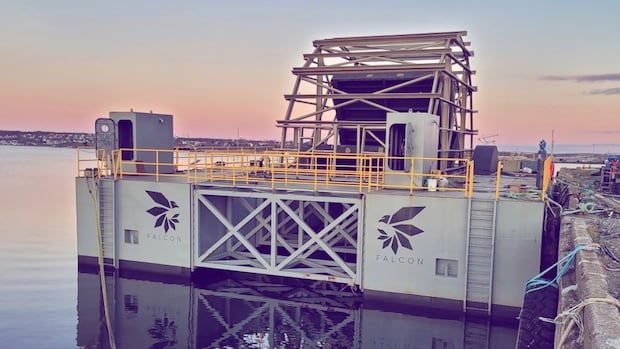Nova Scotia tidal power developer rebrands, seeks more money

A tidal energy company awarded the right to harness electricity from the Bay of Fundy has changed its name, its CEO and its business model, but it is not clear when it will start generating power.
It needs to raise more money first.
“The capital will be coming from existing relationships and new investors that we hope to bring into the business too,” said Jay McKenna, new CEO of Occurrent Power, formerly Big Moon Power.
The name change was announced this week along with a new U.S. lead partner, Orion Infrastructure Capital.
The corporate restructuring was welcomed as a “renewed commitment” to tidal power by Lindsay Bennett, executive director of the Fundy Ocean Research Centre for Energy, a government-funded non-profit overseeing a tidal test site and research facility in Nova Scotia.
Premium price for electricity
Four years ago, Nova Scotia awarded Big Moon a berth at the test site for tidal power in the Minas Passage. The award came with a guaranteed premium price for four megawatts of electricity — enough to power 1,400 households.
The 15-year power purchase agreement with Nova Scotia Power pays a hefty 53 cents per kilowatt hour — well above the current residential rate of 17 cents per kilowatt hour.
McKenna was unable to say when Occurrent will install its floating turbine and generate electricity. Its prototype — called The Falcon — has been laid up in the Port of Saint John in New Brunswick since October 2022.
“Right now, the first step for us is to be able to gather more data,” he told CBC News on Thursday.
That is not the only uncertainty surrounding the company.
The berth award required the removal of a tidal turbine abandoned on the ocean floor when a previous developer went bankrupt six years ago.
McKenna could not confirm if Occurrent will meet the year-end deadline to remove the 1,300-tonne turbine.
“My comment is we are working earnestly to meet the terms of the contract.”
Province firm on deadline
The province is not receptive to a delay.
“As far as I’m concerned right now, December 31st of 2024 is the day that that turbine has to be up off the floor,” said Tory Rushton, minister of natural resources and renewables.
Asked if he would accept postponing the deadline, Rushton replied, “Obviously no.”
“It would have to be a pretty impactful argument that they would make. This date was put in there. It was a condition of their berth, and as the MLA in that area, I certainly expect that turbine to come up off the ocean floor.”
Both the province and Occurrent say an original $4.5-million security deposit required of Big Moon as part of the berth award remains in place.
The company bills its floating turbine technology as easier to deploy and maintain, making it easier to install and scale up to deliver a reliable supply of renewable electricity that pays. The business model is to expand supply by an additional 20 megawatts in what it calls “adjacent” areas.
“We are also out speaking to new investors and new capital providers about funding the go-forward business plan as well,” McKenna said.
The elusive prize: An ‘inexhaustible’ source of energy
For now, the focus is “getting the first four megawatts completed, getting that project executed, deployed and operational.”
There is also agreement on the underlying — but as yet unrealized — promise of tidal power.
“Atlantic Canada is endowed with a very differentiated opportunity that, as most around the tidal sector know, is uncorrelated to localized weather. It’s uncorrelated to seasonal climates. It’s an available resource that is highly predictable, very long term, inexhaustible. There are a lot of really, really valuable attributes about this resource,” said McKenna.




